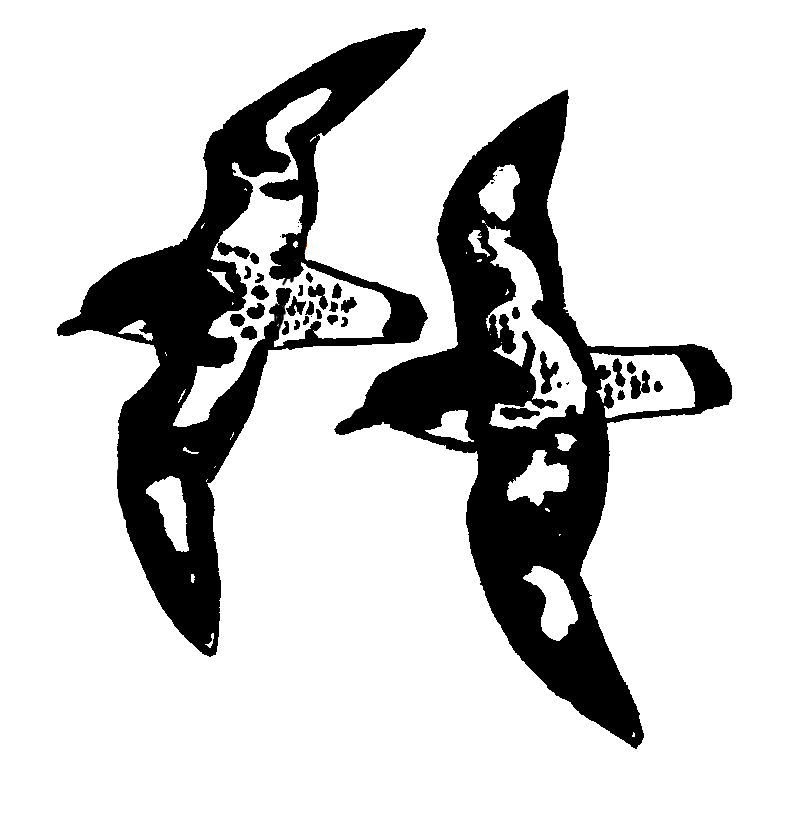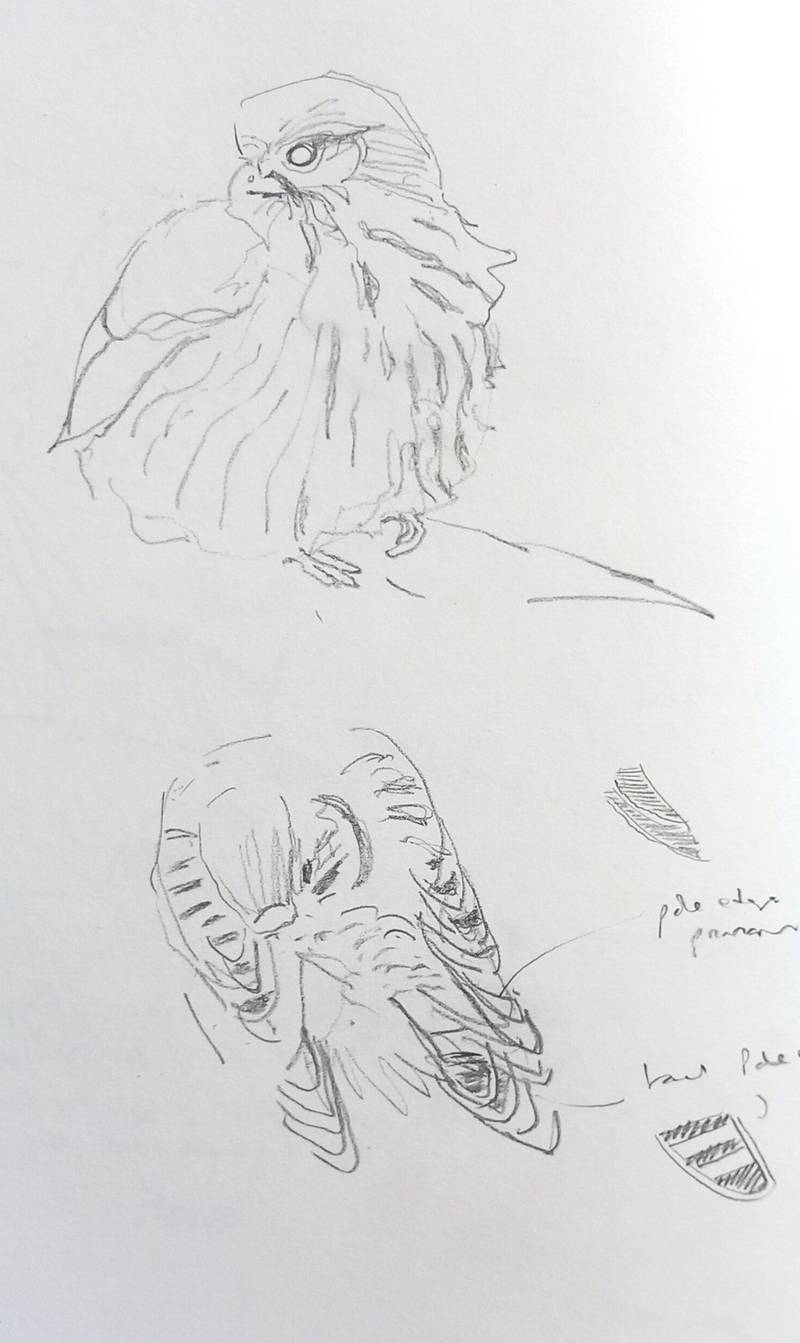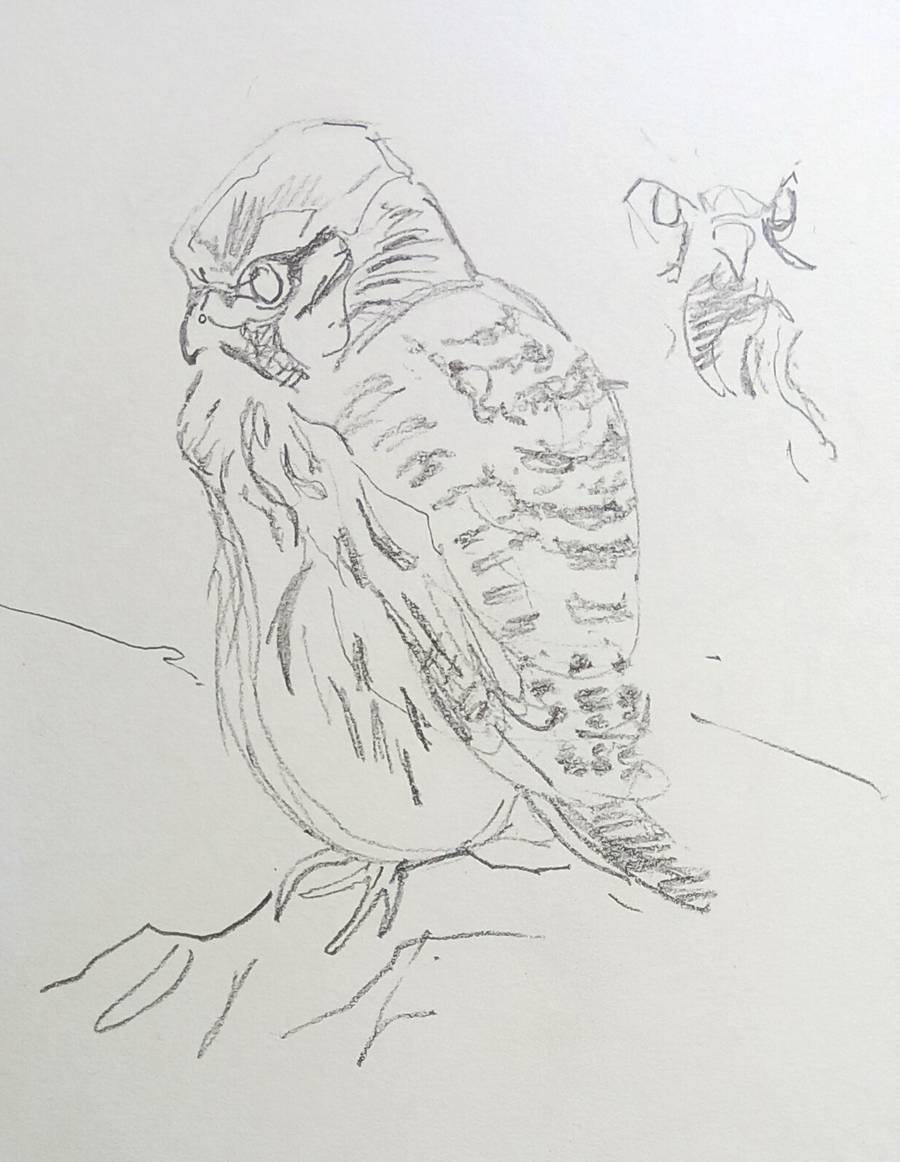Summer Cliffs — July 2025
I've been following the progress of a Kestrel nest on one of my local sea cliffs. In previous years they have chosen a hole or similar well hidden site
which meant there was nothing to see until the chicks fledged. This year, however, they used an old Herring Gull nest. It has been a treat,
because I've had a good view into the nest. Here are a few pictures.
 Kestrel incubating — pastel pencil & watercolour
Kestrel incubating — pastel pencil & watercolour
 Kestrel incubating — pencil sketches
Kestrel incubating — pencil sketches
 Kestrel incubating 11 June — pastel pencil & watercolour
Kestrel incubating 11 June — pastel pencil & watercolour
There was only one chick, which is unusual. I couldn't see how many eggs she had, but normally she'd lay 4 - 5 eggs.
 Kestrel female and chic 23 June — pastel pencil and watercolour
Kestrel female and chic 23 June — pastel pencil and watercolour
Young Kestrels grow quickly, and on my next visit the chick was already losing the down. They look a bit scruffy at this stage.
 Chick moulting 3 July — pastel pencil and watercolour
Chick moulting 3 July — pastel pencil and watercolour
Less than a week later the chick was fully grown and almost ready to fledge. A tiny bit of down remains
on the forehead. The parents were not visiting very often and the chick was pretty fidgety and mobile, wandering around the rock ledge.
 Chick almost ready to fledge 9 July — pastel pencil and watercolour
Chick almost ready to fledge 9 July — pastel pencil and watercolour
 Chick almost ready to fledge — pencil sketches
Chick almost ready to fledge — pencil sketches
 Chick almost ready to fledge — pastel pencil and watercolour
Chick almost ready to fledge — pastel pencil and watercolour
There are plenty of other delights on these cliffs in summer. Guillemots always make good subjects.
 Guillemots — pastel pencil and watercolour
Guillemots — pastel pencil and watercolour
 Guillemots — pastel pencil and watercolour
Guillemots — pastel pencil and watercolour
Kittiwakes are another favourite, but they are subtly beautiful birds and it is difficult to do them justice. There seems to be a good number of chicks
this year, which is heartening to see.
 Kittiwake — pencil and watercolour
Kittiwake — pencil and watercolour
Finally, an Oystercatcher on its nest. It has been sat here for months it seems! But the first nesting attempt failed (I assume its eggs were
predated) and it re-layed. The sunlight was very strong, partially backlighting the bird and vegetation, making an attractive image.
(And I'm pleased to report that soon after this sketch, it hatched two chicks. But it takes
over a month before the chicks can fly, so it will be an anxious time for the parents.)
 Oystercatchers — pencil and watercolour
Oystercatchers — pencil and watercolour















